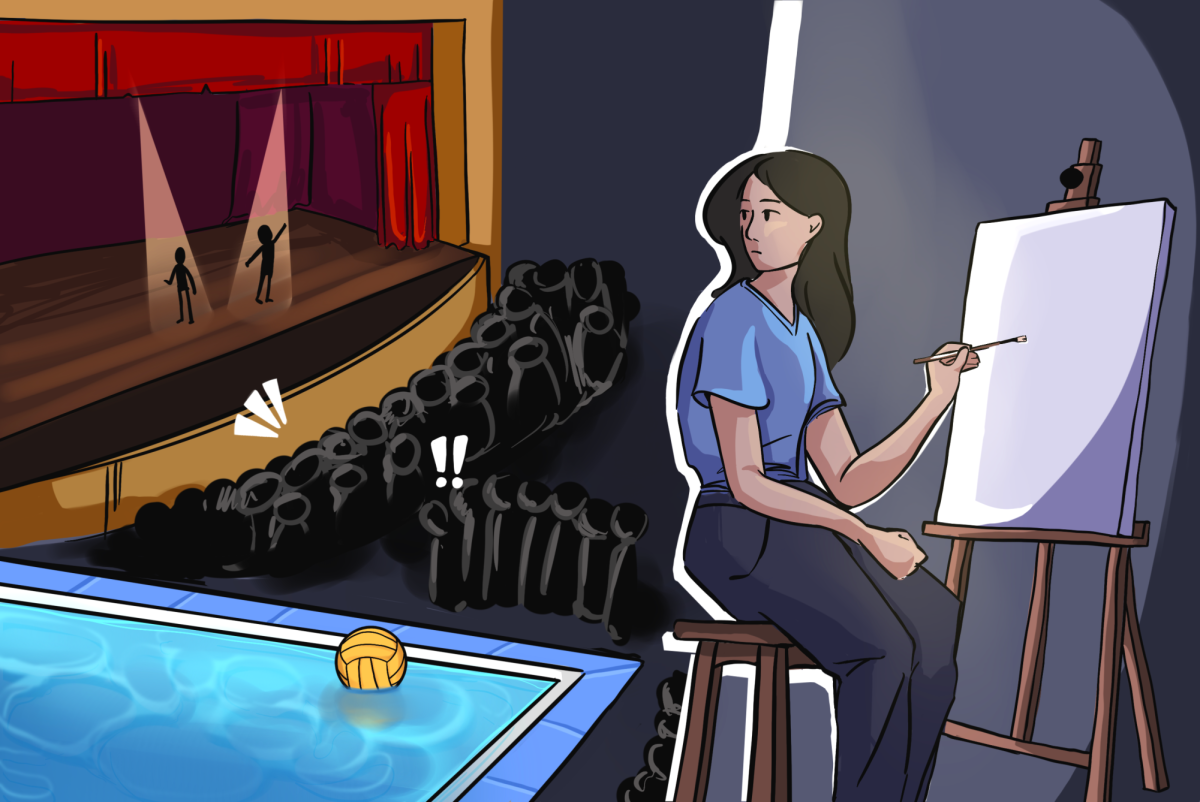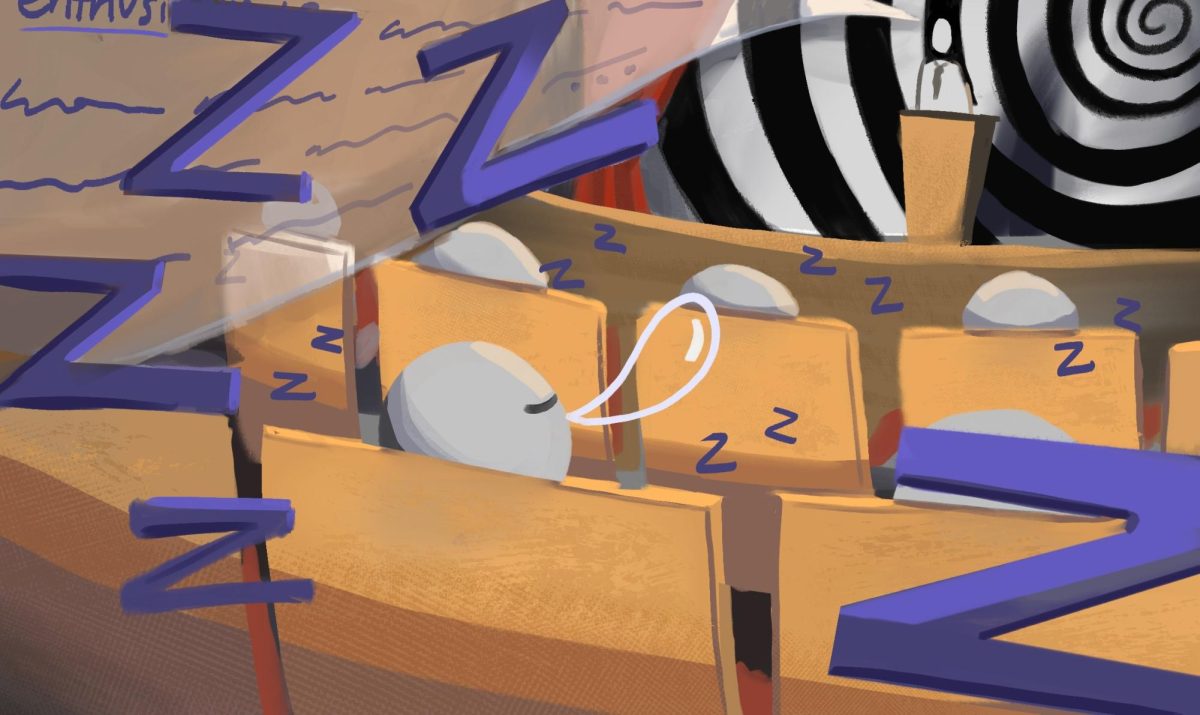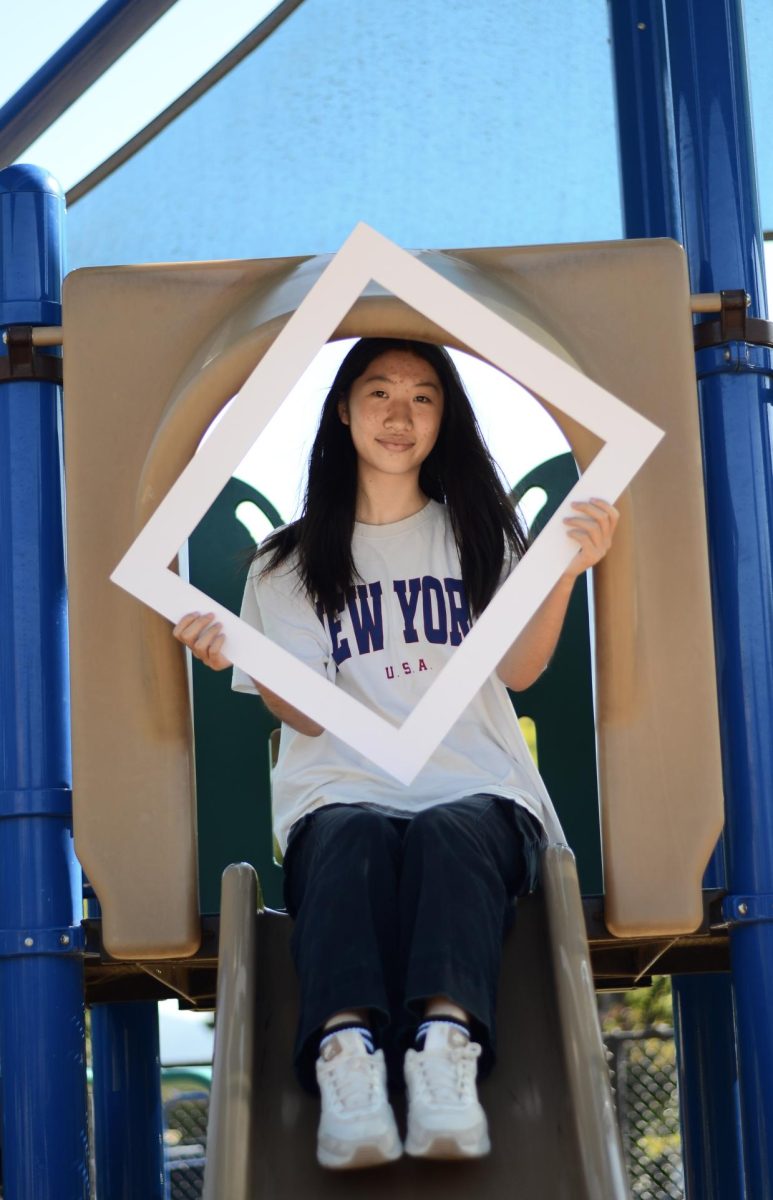A colorful piece catches your eye as you walk through the Shah building or into the RPAC talking to your friends. You might notice the paintings or sculptures left by Harker’s artists. Each piece is the culmination of hours of work and dedication. However, the moment is brief, and you turn back to your friends as you head to class.
In ninth grade, students start their artistic journey in the Study of Visual Arts and continue to more specialized classes like AP Drawing or Honors Directed Portfolio. These classes not only expose students to a variety of tools and techniques but also a means of self-expression. Unfortunately, the visual arts community is much smaller compared to Harker’s other programs. 55% of students participate in a sport and 45% participate in Performing Arts. In comparison, in the 2023-24 school year, only four students took an AP art class.
One contributing factor is that Harker’s accommodation of the Visual Arts program contrasts with that of other programs. Mainly, student art is kept in unused places of other facilities rather than given their own designated area. If artwork is placed somewhere simply because there is space to fill, these pieces are not given the proper acknowledgment they deserve and easily fade into the background.
Despite Nichols being the host of Artstravaganza, the annual art gallery for Harker, pieces can only be hung for around three days before the humidity begins to impact the works negatively. As a LEED (Leadership in Energy and Environmental Design) Gold-certified building, Nichols has a more energy-efficient and eco-friendly air conditioning system compared to other buildings its size. However, this has adverse effects when it comes to displaying artwork.
To solve these issues, Harker could expand the art facility to include a gallery space that serves as a permanent exhibition area where student works can be displayed. Connected to the art building, this space can foster the Visual Arts program’s main events, like Artstravaganza. Since the art would then be concentrated in one area, showcasing artwork would be more convenient and accessible.
In the past, Harker has renovated to accommodate athletics, such as the pool and football field in 2009 and the athletic center in 2017. Since then, Harker constructed the Rothschild Performing Arts Center for the performing arts program as well. Although fewer students participate in visual arts, a modest renovation or new space along those lines would greatly benefit student artists by providing them with long-term art displays.
With the annual Artist-in-Residence program highlighting contemporary artists, Harker has the potential to expend efforts on a large-scale event regarding visual arts. Including mural space, talks and demonstrations on the different Harker campuses, elements from this program could be implemented in events of similar size to uplift student artists as well.
Although Harker already provides many supplies and materials for student artists, taking this extra step in accommodations for the Visual Arts Program will allow it to flourish. The vibrant and passionate group of artists at Harker deserves more than just a passing glance. The works of these artists reflect countless hours of dedication, creativity, and personal expression, yet many of them blend into the background of our academic lives.
The next time you pass Nichols, Shah or the RPAC, consider taking the time out of your busy schedule to stop and admire the craftsmanship required for students’ elaborate pieces. Appreciating the hours students spend creating art and helping give these artists the acknowledgment that they deserve is a small act that takes only a second and goes a long way.


















![“[Building nerf blasters] became this outlet of creativity for me that hasn't been matched by anything else. The process [of] making a build complete to your desire is such a painstakingly difficult process, but I've had to learn from [the skills needed from] soldering to proper painting. There's so many different options for everything, if you think about it, it exists. The best part is [that] if it doesn't exist, you can build it yourself," Ishaan Parate said.](https://harkeraquila.com/wp-content/uploads/2022/08/DSC_8149-900x604.jpg)




![“When I came into high school, I was ready to be a follower. But DECA was a game changer for me. It helped me overcome my fear of public speaking, and it's played such a major role in who I've become today. To be able to successfully lead a chapter of 150 students, an officer team and be one of the upperclassmen I once really admired is something I'm [really] proud of,” Anvitha Tummala ('21) said.](https://harkeraquila.com/wp-content/uploads/2021/07/Screen-Shot-2021-07-25-at-9.50.05-AM-900x594.png)







![“I think getting up in the morning and having a sense of purpose [is exciting]. I think without a certain amount of drive, life is kind of obsolete and mundane, and I think having that every single day is what makes each day unique and kind of makes life exciting,” Neymika Jain (12) said.](https://harkeraquila.com/wp-content/uploads/2017/06/Screen-Shot-2017-06-03-at-4.54.16-PM.png)








![“My slogan is ‘slow feet, don’t eat, and I’m hungry.’ You need to run fast to get where you are–you aren't going to get those championships if you aren't fast,” Angel Cervantes (12) said. “I want to do well in school on my tests and in track and win championships for my team. I live by that, [and] I can do that anywhere: in the classroom or on the field.”](https://harkeraquila.com/wp-content/uploads/2018/06/DSC5146-900x601.jpg)
![“[Volleyball has] taught me how to fall correctly, and another thing it taught is that you don’t have to be the best at something to be good at it. If you just hit the ball in a smart way, then it still scores points and you’re good at it. You could be a background player and still make a much bigger impact on the team than you would think,” Anya Gert (’20) said.](https://harkeraquila.com/wp-content/uploads/2020/06/AnnaGert_JinTuan_HoHPhotoEdited-600x900.jpeg)

![“I'm not nearly there yet, but [my confidence has] definitely been getting better since I was pretty shy and timid coming into Harker my freshman year. I know that there's a lot of people that are really confident in what they do, and I really admire them. Everyone's so driven and that has really pushed me to kind of try to find my own place in high school and be more confident,” Alyssa Huang (’20) said.](https://harkeraquila.com/wp-content/uploads/2020/06/AlyssaHuang_EmilyChen_HoHPhoto-900x749.jpeg)










